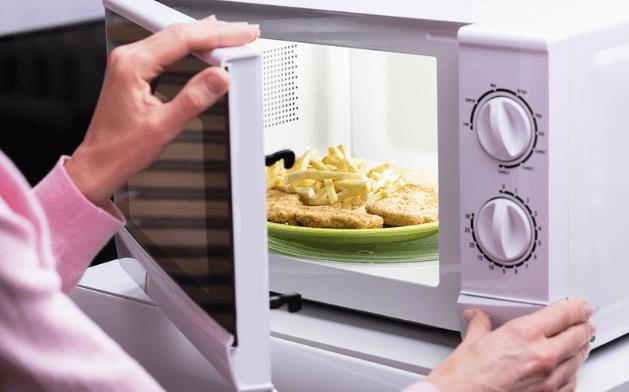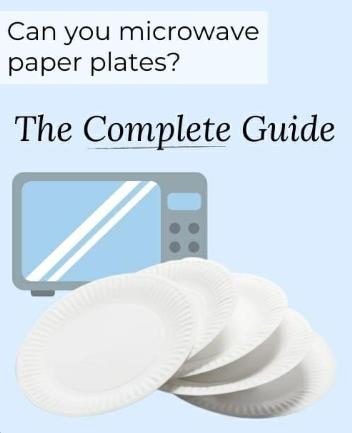
Content Menu
● Understanding Disposable Plastic Plates
>> Types of Disposable Plastic Plates
● Identifying Microwave-Safe Disposable Plates
● Risks of Microwaving Non-Safe Plastics
● How to Test If Your Disposable Plastic Plate Is Microwave Safe
● Best Practices for Microwaving Food on Plastic Plates
● Alternatives to Disposable Plastic Plates
● The Chemical Concerns of Microwaving Plastics
>> Bisphenol A (BPA) and Phthalates
>> Microplastics
● The Impact of Temperature on Plastic Safety
● Consumer Awareness and Regulations
>> Recommendations for Consumers
● Conclusion
● FAQ
>> 1. Can all types of plastic plates be microwaved?
>> 2. What happens if I microwave non-microwave-safe plastic?
>> 3. How can I tell if my plastic plate is BPA-free?
>> 4. Is it safe to reheat food on paper plates?
>> 5. What should I do if I'm unsure about my disposable plate's safety?
● Citations:
Microwaving food has become a standard practice in many households, thanks to its convenience and speed. However, the safety of using disposable plastic plates in the microwave is a common concern for many. In this comprehensive guide, we will explore whether you can safely put disposable plastic plates in the microwave, what types are safe, and how to identify them. We will also discuss the potential risks associated with microwaving plastics, particularly those that are not labeled as microwave-safe.

Understanding Disposable Plastic Plates
Disposable plastic plates are designed for convenience, often used at parties, picnics, and casual dining settings. They come in various materials and qualities, which can significantly impact their safety when exposed to microwave heat.
Types of Disposable Plastic Plates
- Polystyrene (PS): Commonly used for take-out containers and disposable plates. Generally not microwave-safe unless explicitly labeled.
- Polypropylene (PP): Marked as number 5 on the recycling code. This type is considered microwave-safe due to its high heat tolerance.
- Polyethylene (PE): Includes both high-density (HDPE) and low-density (LDPE) plastics. HDPE is not recommended for microwaving, while LDPE can sometimes be used but should be approached with caution.
Identifying Microwave-Safe Disposable Plates
To determine if a disposable plastic plate is safe for microwaving, look for specific indicators:
- Microwave-Safe Label: Check for a label or symbol indicating that the plate is microwave-safe. This is often represented by a wavy line or the words "microwave safe."
- Recycling Code: Plates marked with the number 5 (PP) are generally safe for microwave use. Avoid those marked with numbers 1 (PET), 3 (PVC), 6 (PS), and 7 (other), as they may leach harmful chemicals when heated.
- Manufacturer Information: If unsure, consult the packaging or contact the manufacturer for clarification on whether their product is microwave-safe.
Risks of Microwaving Non-Safe Plastics
Using non-microwave-safe plastic plates can pose several risks:
- Chemical Leaching: Heating non-microwave-safe plastics can cause harmful chemicals like BPA and phthalates to leach into food. These substances have been linked to various health issues.
- Melting and Warping: Non-safe plastics may melt or warp in the microwave, potentially contaminating food and creating a mess inside the appliance.
- Fire Hazard: In some cases, certain plastics can catch fire if exposed to high temperatures for too long.
How to Test If Your Disposable Plastic Plate Is Microwave Safe
If you're uncertain about a plate's safety, you can conduct a simple test:
1. Place a cup of water in the microwave alongside the plastic plate.
2. Heat both for one minute on high.
3. Carefully check if the plate is warm or hot:
- If it is warm while the cup of water remains cool, it is likely not safe for microwaving.
- If both are hot or only the cup of water is hot, the plate may be safe to use.
Best Practices for Microwaving Food on Plastic Plates
To ensure safety while microwaving food on disposable plastic plates, follow these guidelines:
- Use Microwave-Safe Plates: Always opt for plates that are clearly labeled as microwave-safe.
- Avoid Oily or Greasy Foods: These can cause excessive heat buildup and increase the risk of melting.
- Limit Heating Time: Reduce exposure time in the microwave to minimize risks associated with heat.
- Monitor During Heating: Keep an eye on your food while it's heating to catch any potential issues early.

Alternatives to Disposable Plastic Plates
If you're concerned about using disposable plastic plates in the microwave, consider these alternatives:
- Glass Containers: These are generally considered safe for microwaving and do not leach harmful chemicals.
- Ceramic Dishes: Like glass, ceramic is safe for use in microwaves and does not pose health risks associated with certain plastics.
- Microwave-Safe Paper Products: Some paper products are designed for microwave use; however, avoid those with coatings or decorations that may not be safe.
The Chemical Concerns of Microwaving Plastics
When discussing disposable plastic plates and their safety in microwaves, it's essential to understand the chemical composition of these materials. Many plastics contain additives that enhance their properties but may also pose health risks when heated.
Bisphenol A (BPA) and Phthalates
Two significant concerns regarding plastics are BPA and phthalates:
- BPA: This chemical is commonly found in polycarbonate plastics and epoxy resins. Studies have shown that BPA can leach into food when heated, particularly in containers not labeled as BPA-free. The FDA has acknowledged that BPA exposure can occur from food packaging but maintains that current levels are considered safe[1][5].
- Phthalates: These chemicals are used to make plastics more flexible and durable. Like BPA, phthalates can migrate into food when heated. Research indicates that exposure to phthalates may disrupt hormonal functions and lead to various health issues[4][6].
Microplastics
Recent studies have raised concerns about microplastics—tiny particles shed from plastic containers into food during microwaving. Research has shown that heating certain types of plastics can release millions of microplastic particles into food[7][9]. These particles have been linked to health risks such as inflammation and cellular damage[8].
The Impact of Temperature on Plastic Safety
Temperature plays a crucial role in determining whether a plastic plate is safe for microwaving:
- Heat Resistance: Different types of plastics have varying heat resistance levels. Polypropylene (PP) can typically withstand higher temperatures without deforming or leaching harmful substances compared to polystyrene (PS).
- Heating Duration: The longer you heat food in plastic containers, the greater the risk of chemical leaching. It's advisable to heat food in short intervals and check frequently[4].
Consumer Awareness and Regulations
Consumer awareness regarding the safety of plastics has grown over recent years. Many manufacturers now provide clear labeling on their products indicating whether they are microwave-safe. Additionally, regulatory bodies like the FDA monitor plastic safety standards but emphasize consumer responsibility in choosing appropriate materials[1][4].
Recommendations for Consumers
To minimize health risks associated with microwaving food in plastic containers:
- Always check for labels indicating "microwave-safe" before use.
- Avoid using older or damaged plastic containers as they may degrade more easily when heated.
- Consider using alternatives like glass or ceramic whenever possible.
Conclusion
In summary, while some disposable plastic plates can be safely used in the microwave, it is crucial to identify which ones are suitable by checking labels and recycling codes. Always prioritize safety by opting for products specifically designed for microwave use and considering alternatives like glass or ceramic containers. By following these guidelines, you can enjoy the convenience of microwaving without compromising your health.

FAQ
1. Can all types of plastic plates be microwaved?
Not all types of plastic plates are safe for microwaving. Look for those labeled as microwave-safe or marked with recycling code #5 (polypropylene).
2. What happens if I microwave non-microwave-safe plastic?
Microwaving non-safe plastics can cause them to melt or warp, potentially leaching harmful chemicals into your food.
3. How can I tell if my plastic plate is BPA-free?
Check for labels indicating BPA-free status or look at the recycling code; plastics marked with #1, #3, #6, and #7 often contain BPA.
4. Is it safe to reheat food on paper plates?
Most plain paper plates are safe to reheat food in the microwave if they do not have a plastic coating; always check labels first.
5. What should I do if I'm unsure about my disposable plate's safety?
If you're unsure about a disposable plate's safety for microwaving, it's best to err on the side of caution and use glass or ceramic containers instead.
Citations:
[1] https://smartyhadaparty.com/blogs/home/how-to-tell-if-a-plastic-plate-is-safe-for-microwaves
[2] https://www.reddit.com/r/NoStupidQuestions/comments/1aieax3/i_ate_off_a_microwaved_plastic_plate_will_i_be/
[3] https://www.beyondplastics.org/fact-sheets/stop-microwaving-plastic
[4] https://www.foodnetwork.com/healthyeats/healthy-tips/2019/02/what-to-know-about-using-plastic-in-the-microwave
[5] https://www.healthline.com/nutrition/can-you-microwave-plastic
[6] https://www.whirlpool.com/blog/kitchen/what-you-can-cant-microwave.html
[7] https://www.wired.com/story/for-the-love-of-god-stop-microwaving-plastic/
[8] https://www.universityofcalifornia.edu/news/what-plastic-pollution-does-your-body-and-what-you-can-do-about-it
[9] https://www.foodandwine.com/can-you-microwave-plastic-8700835

















